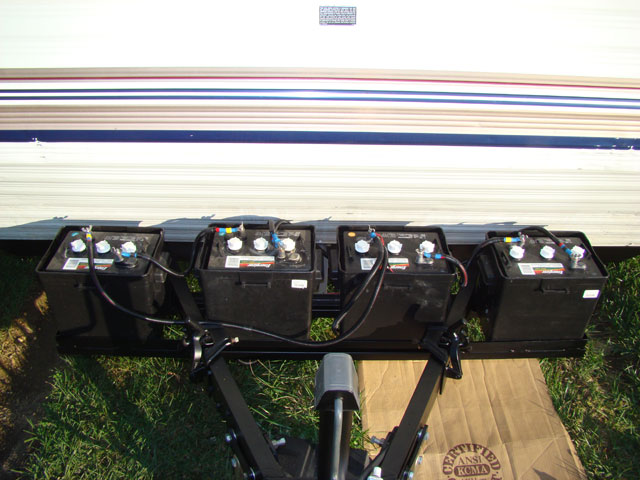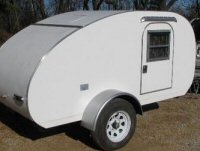I agree with the above, with only one minor exception - the T-105's are rated 225 Amp hours (20 hr rate -
http://www.trojanbattery.com/Products/T-1056V.aspx.
In my opinion, for the money, it's hard to beat a golf cart battery. When it comes to a lead-acid battery, weight is king in the durability department. The plates on a GC are thicker and solid. In comparison, a "starting" battery (AKA "SLI") has thinner, perforated plates. The perforated plates are used to increase surface area which is what gives a starting battery it's "cranking amps."
GCs are readily available, you can pick them up at any Sams Club or Costco. GCs are also a sure bet as far as them being true deep cycle. It can be very difficult to find a true deep cycle in 12V, many wind up being constructed just like starting batteries. GCs also enjoy a great reputation with many people reporting 10-12 years lifespan.
AGMs are cool stuff. They still should be vented for safety as they can vent if accidentally overcharged. They do have different charging requirements than a wet battery, so for best life you should ensure that your charger is suitable for AGMs. A couple on another forum I frequent are full timers and love their AGMs, I believe they run Lifelines (they have a lot of info on their rig on their site
http://www.everymilesamemory.com/). I have never heard a bad report on Lifelines, and if I was in the market for an AGM I'd start with them. On the other hand, I wouldn't take another Optima if it was given to me for free (yes, my experiences have been THAT bad).
On my trailer I run 4 Energizer branded (mfg. by Johnson Controls) GC2s from Sams Club. These are rated at 220Ah and sell for (as I recall) about $70/ea. I'm going into the third year with these, and I'm very pleased with their performance. We enjoy dry camping, and with 440Ah on board, it's a real pleasure. I do water them on average twice a year, and stick a hydrometer in them on occasion to make sure things are OK. So far, so good - I wouldn't think twice about running them in the future:

- Frank







